Building Airports
Like An Egyptian
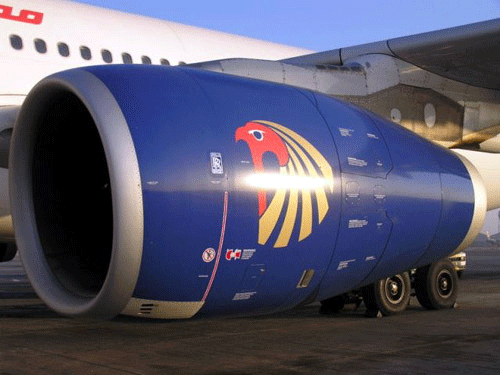
 Egypt’s
World Bank-funded Airport Development Project (ADP) will soon receive
additional funds. What is the project all about? Egypt’s
World Bank-funded Airport Development Project (ADP) will soon receive
additional funds. What is the project all about?
In the early 1990’s, Egypt began
moving away from central planning and downsizing its massive public
sector. Between 1995 and 1999, the economy responded to the new market-oriented
environment, and growth increased to around five percent per annum.
Following slower growth in the early years
of this century, the economy responded strongly to moves toward liberalization,
and this, combined with an increase in international tourism, has resulted
in increasing demands on air transport in Egypt. Expanding the capacity
for air transport is key to continuing economic growth, particularly
in the tourism sector.
Approximately 50 percent of Egypt’s
air passenger traffic is handled at Cairo International Airport (CAI).
In 2000, passenger traffic was 8.9 million passengers, and total capacity
of the two existing terminals at the airport was estimated at 9 million.
Since then, however, passenger traffic has experienced steady growth,
and the airport has been operating well above capacity – at about
12 million passengers per year. Freight traffic, which is almost entirely
concentrated at CAI, has grown steadily, reaching over 285,000 tons
in 2007. For both passenger and freight traffic, terminal and apron
capacity constraints have constrained growth; for example, foreign charter
flights to CAI had to be limited. Elsewhere in Egypt, the country’s
other international airports, which primarily serve tourism, experienced
growth rates averaging nearly 13 percent per annum between 1993 and
2002. Between 2003 and 2007, traffic at Sharm el Sheikh (SSH), the nation’s
second largest airport, grew from 3.4 million to 6 million, the latter
figure only possible due to the opening of a new terminal in mid 2007.
The original World Bank/IBRD Loan of US$
355 million for the Airports Development Project financed works for
the construction of Terminal 3 at CAI (TB3), the construction of a new
terminal at SSH, and technical assistance and goods to strengthen air
sector operations and environmental management. The loan was approved
on March 30, 2004; it became effective on August 24, 2004, and is scheduled
to close on June 30, 2009. The US$ 40.0 million Additional Financing
Loan will finance cost overruns in the construction of TB3.
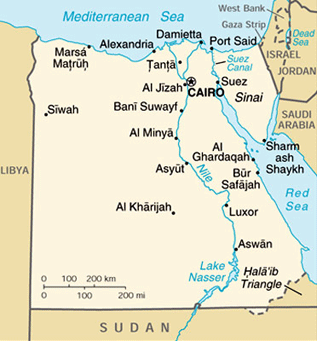 |
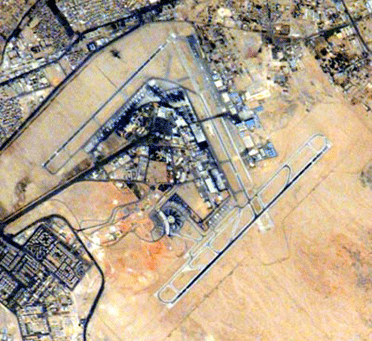 |
The project’s objectives
are to increase performance at the Cairo International airport (aerial
above) and the Sharm El Sheikh airport and promote public-private development
of such airports. There have been no changes to the original objectives,
design, or scope. The additional financing will enable the completion
of the project and contribute to the achievement of the above objectives.
At the time of preparation of the ADP,
private financing for Egyptian airports was unlikely, and public financing
for necessary infrastructure investments was the only feasible alternative.
The World Bank says that the project is
thus far “considered to be a success”. The second component
of the project – construction of a new terminal at Sharm El Sheik
Airport – has been completed, and the new terminal successfully
opened to commercial traffic in June 2007. All technical studies under
the project have been completed and the Egyptian Holding Company for
Airports and Air Navigation (EHCAAN) has formed technical committees
to consider the recommendations in many of the final reports, including
liberalizing air transport, developing an air cargo strategy, and strengthening
sector capacity. The air and noise quality monitoring equipment have
been installed and the Environmental Management Plans have been satisfactorily
implemented.
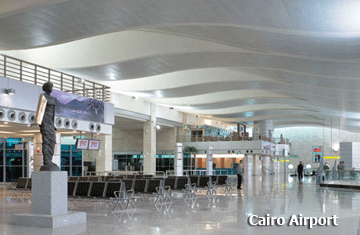 The
World Bank believes that its continued involvement in the financing
of TB3 is justified on the grounds of maintaining consistency in supervision
of works, as well as of continuing the overall dialogue on air sector
liberalization, which has thus far proven highly productive. The
World Bank believes that its continued involvement in the financing
of TB3 is justified on the grounds of maintaining consistency in supervision
of works, as well as of continuing the overall dialogue on air sector
liberalization, which has thus far proven highly productive.
The additional loan would help finance
the costs associated with cost overruns of TB3, the construction of
which was expected to be completed in September, 2008. The bulk of the
overrun is due to “necessary updates to the original terminal
design documents”. In addition, additional costs were incurred
under the main construction contract to integrate the older designs
for the terminal building with state-of-the-art IT systems that were
procured separately.
Finally, the designs were updated to
incorporate changes in Government of Egypt and International Civil Aviation
Organization (ICAO) standards since 1995. The changes do not affect
the scope of the component; altogether they increase the overall quality
of the construction and ensure that the terminal meets the needs of
today’s air traffic at CAI. The
total additional cost of the terminal is expected to be US$ 58.8 million,
of which approximately US$ 40.0 million is in foreign currency expenses.
The additional financing will only finance foreign currency expenses;
local currency expenses will be financed by the borrower.
The financing of the program will be
as follows:
Source |
Local |
Foreign |
Total |
Borrower/Govt of Egypt |
18.8 |
|
18.8 |
International Bank for Reconstruction and Development/WORLD
BANK |
|
40.0 |
40.0 |
TOTAL |
18.8 |
40.0 |
58.8 |
EHCAAN, as the Project implementing
agency, assembled a Project Management Unit (PMU) to manage the ADP.
Technical implementation of Component 1 of the project, which continues
under the additional financing, is managed by the Cairo Airport Company
(CAC), in coordination with the PMU. The PMU monitors and evaluates
progress, coordinates and advises on all fiduciary matters, maintains
project financial accounts and the Special Account, submits replenishment
requests and requests for direct payment to the Bank, and prepares supervisory
reports, including financial management reports. The PMU also verifies
compliance with agreed procedures. Implementation of the additional
financing will continue under the same arrangements. The additional
financing will result in no additional procurement or changes to project
management.
Airport management in Egypt has strengthened
significantly over the last five years. Fraport Company, the owner and
operator of Frankfurt International Airport, has been managing CAI since
2005 under a management contract with the Cairo Airport Company. Reforms
in the airport sector include a significant increase in passenger tariffs
– from US$4.00 to US$15.00 for international passengers, and from
US$1.00 to US$3.00 for domestic passengers. Such changes have formed
a solid foundation for continued sustainable management of airport assets.
Gordon Feller |




 The
World Bank believes that its continued involvement in the financing
of TB3 is justified on the grounds of maintaining consistency in supervision
of works, as well as of continuing the overall dialogue on air sector
liberalization, which has thus far proven highly productive.
The
World Bank believes that its continued involvement in the financing
of TB3 is justified on the grounds of maintaining consistency in supervision
of works, as well as of continuing the overall dialogue on air sector
liberalization, which has thus far proven highly productive.

 Egypt’s
World Bank-funded Airport Development Project (ADP) will soon receive
additional funds. What is the project all about?
Egypt’s
World Bank-funded Airport Development Project (ADP) will soon receive
additional funds. What is the project all about? Andreas
Gutberlet
Andreas
Gutberlet 
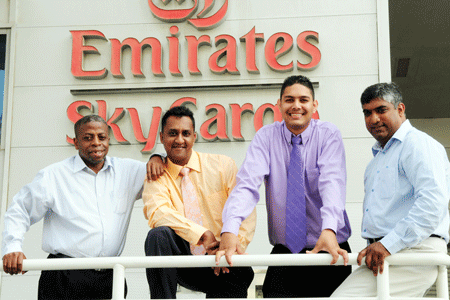
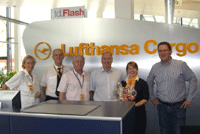 On
August 28, 2009, three new apprentices embarked on their practical
training in HAM, DUS and STR, which are thus now part of the group
of stations with training operations.
On
August 28, 2009, three new apprentices embarked on their practical
training in HAM, DUS and STR, which are thus now part of the group
of stations with training operations. 

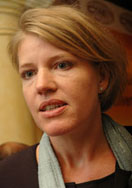


 Air
Cargo News FlyingTypers leads the way again as the world’s first
air cargo publication to connect the industry to the broadly expanding
and interactive base for social commentary—Twitter.
Air
Cargo News FlyingTypers leads the way again as the world’s first
air cargo publication to connect the industry to the broadly expanding
and interactive base for social commentary—Twitter.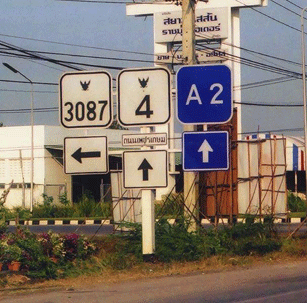 September
30: Mastercard Worldwide Insights says
top Asia & M/E air cargo network impact cities by ranking are
HKG, ICN, TYO, PVG, SIN & DXB, says networked cities in Asia Pacific,
Middle East and Africa will see “increasing returns” phenomenon.
September
30: Mastercard Worldwide Insights says
top Asia & M/E air cargo network impact cities by ranking are
HKG, ICN, TYO, PVG, SIN & DXB, says networked cities in Asia Pacific,
Middle East and Africa will see “increasing returns” phenomenon. September
30: Bucket have a hole? "There is
stabilization but bookings are in what we call low buckets,"
Air France USA Chief Christine Ourmieres said.
September
30: Bucket have a hole? "There is
stabilization but bookings are in what we call low buckets,"
Air France USA Chief Christine Ourmieres said. September
30: "There will be no (cargo) peak
season this year or next year & two or three years before we see
a recovery," says Robert Frei, (left) Panalpina.
September
30: "There will be no (cargo) peak
season this year or next year & two or three years before we see
a recovery," says Robert Frei, (left) Panalpina.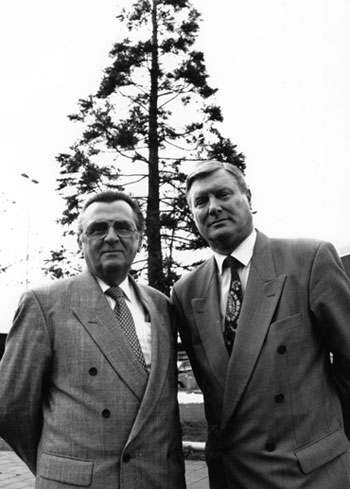
 Contact!
Talk To Geoffrey
Contact!
Talk To Geoffrey